China Brands, Marketing & Consumers
China’s ‘Chanel’? Chinese Beauty Brand Florasis Is Raising Eyebrows on Weibo
Some netizens wonder if the Florasis PR team might have lost their marbles, as their strategy appears to have taken an unusual turn, featuring emotionally charged replies on Weibo.
Published
10 months agoon
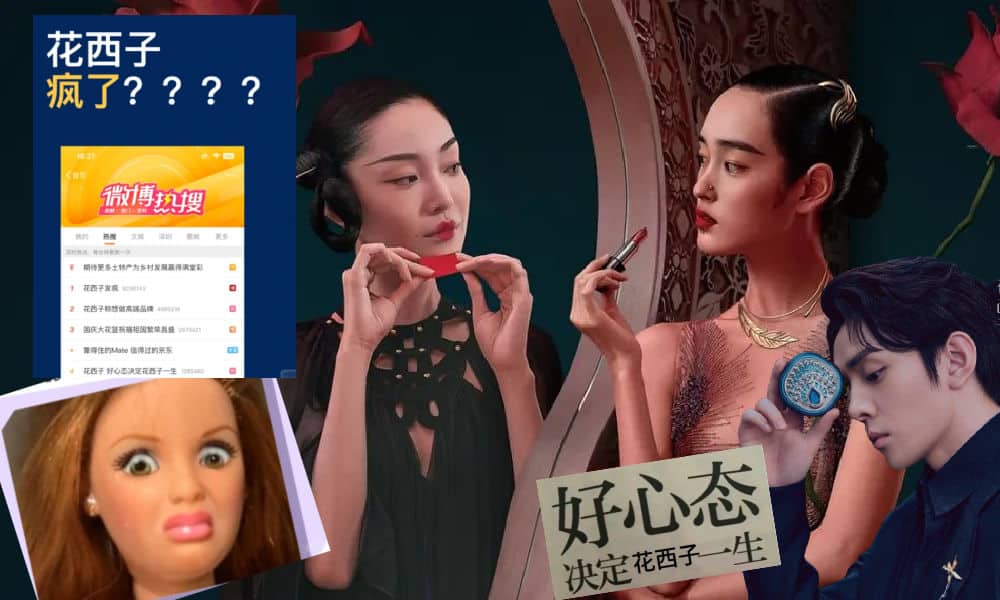
Lost Marbles or marketing logic? Following its involvement in the Li Jiaqi ‘eyebrow pencil gate,’ Chinese beauty brand Florasis’ social media strategy has taken an unconventional turn. The domestic brand recently went trending after declaring its ambition to win over the global luxury cosmetic market, and its plans to challenge established giants like Louis Vuitton and Chanel.
In the world of Chinese cosmetic brands, all eyes are on Florasis (花西子) recently. This Chinese make-up brand gained significant attention earlier this month when the popular beauty influencer ‘Lipstick King’ Li Jiaqi promoted one of their eyebrow pencils during a livestream.
After some viewers questioned whether a single eyebrow pencil costing 79 yuan ($10.8) was perhaps too expensive, Li lashed out and suggested viewers should instead ask themselves if they worked hard enough to deserve a raise.
That moment triggered a social media storm (read here), and suddenly everyone knew about Florasis, which is known as Huāxīzǐ (花西子) in China.
“Huaxi Coins” and Public Mockery
The incident sparked a series of memes and discussions, and among them, the question of what one can buy with 79 yuan in China today was a big one.
While some suggested they could feed an entire family for one day with 79 yuan, others said that it would buy their office lunches for a week. This humorous situation gave rise to the term ‘Huaxi Coins’ or ‘Floracash’ (花西币), with netizens playfully using the price of one Florasis eyebrow pencil’s price as a new currency unit (one ‘Huaxi Coin’ equals 79 yuan/$10.8).
Although Li Jiaqi apologized to his viewers soon after his controversy, it took some time for Florasis to respond the controversy the brand found itself embroiled in.
Florasis, a brand established in Hangzhou in 2017, is deeply connected to Li Jiaqi, as he has been the chief brand ambassador since 2019 and has actively participated in their product development.
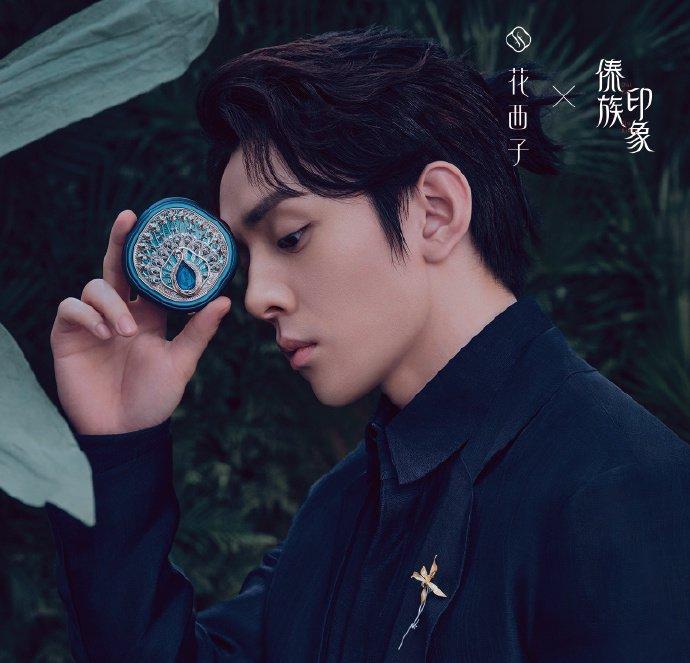
Li Jiaqi x Huaxizi/Florasis.
The entire social media storm prompted a heightened focus on why Florasis products are perceived as relatively expensive.
As reported by Qing Na at Dao Insights, one post that gained significant traction on September 12 revealed that a five-piece Jade Makeup Brush set from Florasis, priced at 919 RMB ($126.28), was, in fact, made by using synthetic fiber bristles, considered cheap and of lower quality. This revelation garnered over 240 million views in just a few hours, adding to the public mockery of the national beauty brand.
The Florasis Dream: Becoming a Leading International Luxury Brand
On September 19, Florasis/Huaxizi finally apologized on social media for its late response to the controversy, and the brand stated that the incident provided an opportunity for them to listen to “the voice of their consumers,” although they did not delve deeper into the price of their products.
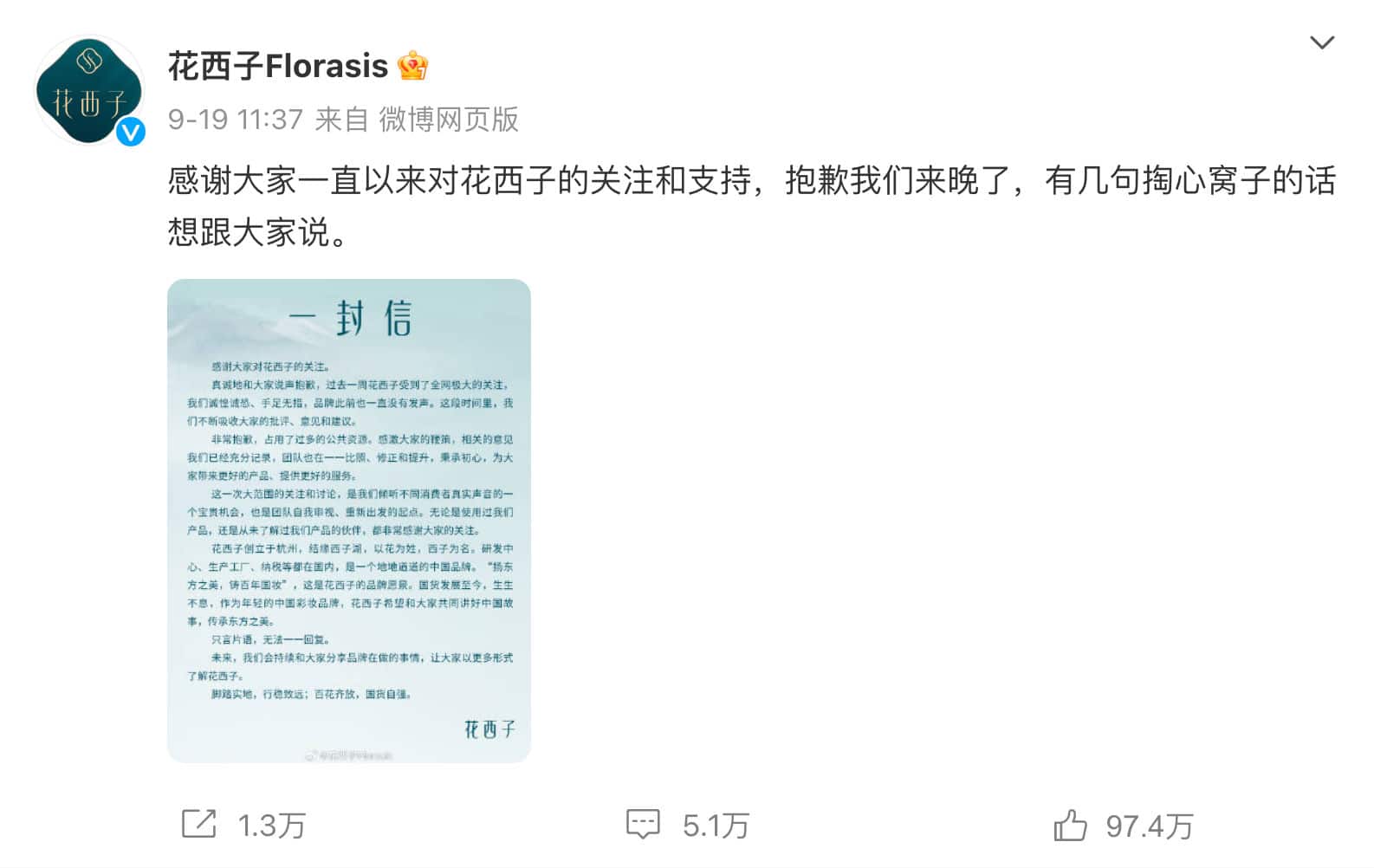
Florasis apology on Weibo, screenshot.
Although people criticized the letter posted by Florasis and the words they used in it, their decision to release a statement initially seemed fruitful: they gained 20,000 new followers in a single night.

Chinese netizens picking apart the apology letter posted by Huaxizi/Florasis. Via Xiaohongshu user @边际平衡術.
While the entire situation drew more attention to the Chinese make-up brand, it also seems to have prompted Florasis to reconsider its own position in the cosmetics industry, both in China and globally. Because on September 26th, the brand publicly and somewhat suddenly declared its ambition of becoming a leading international luxury cosmetics brand.
“Me, Florasis, I’m 6,5 years old,” the post read: “I have a dream: to be a high-end brand, rooted in China, going global.”

Florasis announces its ambition to become a globally recognized make-up brand.
In their post, Florasis used a quote saying “A Positive Mindset Shapes Huaxizi’s Lifetime,” which is derived from the title of a well-known Chinese self-help book from 2012 called “A Positive Mindset Shapes a Woman’s Lifetime” (好心态决定女人一生).
One of the main ideas presented in this book, authored by Li Jin (李津), is that success can never come from a negative or pessimistic mindset; if you see yourself as a failure, you’re likely to fail, but if you envision success, you’re more likely to achieve it.
Next to Chanel: Confusion about Florasis’ Public Relations Tactics
The company’s ambition, on its own, may not be particularly surprising. As stated in a report published by Paicaijing (派财经), Florasis’ co-founder, Fei Man (飞慢), had previously questioned in an interview why Chinese brands were always associated with being cheap, expressing Florasis’ wish to break the “price ceiling” (价格天花板) and escape the ongoing “low price competition” (低价竞争) in China’s beauty industry by delivering high-quality products at a premium price.
However, the wording and the timing seemed odd, and the post created both banter and confusion about Florasis’ public relations tactics, especially because they did much more than that post alone.
On September 20th, approximately ten days after the ‘eyebrow pencil gate’ controversy, the company’s founder, Hua Mantian (花满天), made an announcement on his WeChat channel. He revealed that the brand would be distributing their premium eyebrow pencils, originally priced at 119 yuan ($16.3), during a livestream promotional event that night. They planned to give away free pencils to hundreds of viewers every ten minutes. By giving out over 10,000 free eyebrow pencils in total, the company allegedly hoped to gain more feedback on their product in order to further improve it. Over 400,000 people tuned in to that livestream.
Since then, Florasis seems to be doing all it can to catch the public’s attention, and some netizens even wonder if the editors at the Florasis PR team might have lost their marbles, as they keep posting a lot of unusual replies, – some emotional and somewhat unhinged, – to their own threads on their Weibo account.
Throughout September 26, the account posted dozens of texts/replies, responding to many netizens’ comments. Florasis not only declared its wish to be China’s ‘Chanel’ when it comes to beauty products, it also praised its own efforts in contributing to women’s mental health, preserving traditional culture, innovating cosmetics, and much more.
Their social media texts included phrases such as: “I’m super awesome,” or writing:
“I’m really becoming a bit emotional. I established my own laboratory at just three years old! We now have over 200 research partners, and their leader is Li Huiliang (李慧良), known as the “Number One in Chinese Cosmetics Research and Development.” He’s like a superstar in the industry. We have five big innovation research and development centers, over 7000 square meters, larger than a football field. Don’t I deserve a gold star sticker for that?”
And:
“As a Chinese brand, every generation has a mission. Our generation’s mission is to fight in the international market with high-end presence! You can mock and ridicule me, it’s ok [sad face emoji] I’m already neighbors with Louis Vuitton and Gucci at the [Hangzhou] West Lake [shopping street]! And I will be next to Chanel at Japan’s top-notch department store Isetan. Next up is France, Dubai, America, see you there!”
Subsequently, the hashtag “Florasis Says It’ll Be Side-to-Side with Chanel” (#花西子称要和香奈儿门对门#) received over 470 million views on Weibo. Another hashtag, “Florasis Wants to Be a High-end Brand” (#花西子称想做高端品牌#), received more than 220 million views.
Mad Marketing
By now, the hashtag “Huaxizi Lost It” (#花西子发疯#) has also gone trending on Chinese social media platform Weibo, where people have different thoughts on what might have triggered Florasis’ social media behavior.
While some people really think that Florasis has gone crazy, others see the entire ordeal as a social media spectacle meant to distract attention from what happened with Li Jiaqi, or as a cheap marketing stunt.
One poll conducted by Sina News asked people about the situation. The majority of respondents believed that the social media editor must have lost their mind, while others considered it just another version of “bad marketing is still marketing” – suggesting that even if the publicity strategy is cheap or questionable, it is still used as a marketing tactic to gain attention.

Another question is: does it even matter what the reason behind this unusual online media approach is?
If Florasis is really letting its PR team run wild, it is doing so at a crucial moment, shortly after a significant controversy that cast the brand in a negative light. This moment calls for careful control rather than unconventional tactics. Furthermore, the social media strategy appears to be at odds with Florasis’ typical marketing image, which emphasizes tradition, glamour, and perfection.
If Florasis is using this strategy to attract and divert attention, it also appears that this approach is not yielding the desired results, as many people express a common sentiment: “I didn’t purchase Florasis before, and I certainly won’t be buying it now.”
By Manya Koetse
With contributions by Miranda Barnes
Get the story behind the hashtag. Subscribe to What’s on Weibo here to receive our newsletter and get access to our latest articles:
Spotted a mistake or want to add something? Please let us know in comments below or email us. First-time commenters, please be patient – we will have to manually approve your comment before it appears.
©2023 Whatsonweibo. All rights reserved. Do not reproduce our content without permission – you can contact us at info@whatsonweibo.com.
Manya Koetse is the founder and editor-in-chief of whatsonweibo.com. She is a writer, public speaker, and researcher (Sinologist, MPhil) on social trends, digital developments, and new media in an ever-changing China, with a focus on Chinese society, pop culture, and gender issues. She shares her love for hotpot on hotpotambassador.com. Contact at manya@whatsonweibo.com, or follow on Twitter.

Also Read
China Books & Literature
Why Chinese Publishers Are Boycotting the 618 Shopping Festival
Bookworms love to get a good deal on books, but when the deals are too good, it can actually harm the publishing industry.
Published
2 months agoon
June 8, 2024By
Ruixin Zhang
JD.com’s 618 shopping festival is driving down book prices to such an extent that it has prompted a boycott by Chinese publishers, who are concerned about the financial sustainability of their industry.
When June begins, promotional campaigns for China’s 618 Online Shopping Festival suddenly appear everywhere—it’s hard to ignore.
The 618 Festival is a product of China’s booming e-commerce culture. Taking place annually on June 18th, it is China’s largest mid-year shopping carnival. While Alibaba’s “Singles’ Day” shopping festival has been taking place on November 11th since 2009, the 618 Festival was launched by another Chinese e-commerce giant, JD.com (京东), to celebrate the company’s anniversary, boost its sales, and increase its brand value.
By now, other e-commerce platforms such as Taobao and Pinduoduo have joined the 618 Festival, and it has turned into another major nationwide shopping spree event.
For many book lovers in China, 618 has become the perfect opportunity to stock up on books. In previous years, e-commerce platforms like JD.com and Dangdang (当当) would roll out tempting offers during the festival, such as “300 RMB ($41) off for every 500 RMB ($69) spent” or “50 RMB ($7) off for every 100 RMB ($13.8) spent.”
Starting in May, about a month before 618, the largest bookworm community group on the Douban platform, nicknamed “Buying Like Landsliding, Reading Like Silk Spinning” (买书如山倒,看书如抽丝), would start buzzing with activity, discussing book sales, comparing shopping lists, or sharing views about different issues.

Social media users share lists of which books to buy during the 618 shopping festivities.
This year, however, the mood within the group was different. Many members posted that before the 618 season began, books from various publishers were suddenly taken down from e-commerce platforms, disappearing from their online shopping carts. This unusual occurrence sparked discussions among book lovers, with speculations arising about a potential conflict between Chinese publishers and e-commerce platforms.
A joint statement posted in May provided clarity. According to Chinese media outlet The Paper (@澎湃新闻), eight publishers in Beijing and the Shanghai Publishing and Distribution Association, which represent 46 publishing units in Shanghai, issued a statement indicating they refuse to participate in this year’s 618 promotional campaign as proposed by JD.com.
The collective industry boycott has a clear motivation: during JD’s 618 promotional campaign, which offers all books at steep discounts (e.g., 60-70% off) for eight days, publishers lose money on each book sold. Meanwhile, JD.com continues to profit by forcing publishers to sell books at significantly reduced prices (e.g., 80% off). For many publishers, it is simply not sustainable to sell books at 20% of the original price.
One person who has openly spoken out against JD.com’s practices is Shen Haobo (沈浩波), founder and CEO of Chinese book publisher Motie Group (磨铁集团). Shen shared a post on WeChat Moments on May 31st, stating that Motie has completely stopped shipping to JD.com as it opposes the company’s low-price promotions. Shen said it felt like JD.com is “repeatedly rubbing our faces into the ground.”
Nevertheless, many netizens expressed confusion over the situation. Under the hashtag topic “Multiple Publishers Are Boycotting the 618 Book Promotions” (#多家出版社抵制618图书大促#), people complained about the relatively high cost of physical books.
With a single legitimate copy often costing 50-60 RMB ($7-$8.3), and children’s books often costing much more, many Chinese readers can only afford to buy books during big sales. They question the justification for these rising prices, as books used to be much more affordable.
Book blogger TaoLangGe (@陶朗歌) argues that for ordinary readers in China, the removal of discounted books is not good news. As consumers, most people are not concerned with the “life and death of the publishing industry” and naturally prefer cheaper books.
However, industry insiders argue that a “price war” on books may not truly benefit buyers in the end, as it is actually driving up the prices as a forced response to the frequent discount promotions by e-commerce platforms.
China News (@中国新闻网) interviewed publisher San Shi (三石), who noted that people’s expectations of book prices can be easily influenced by promotional activities, leading to a subconscious belief that purchasing books at such low prices is normal. Publishers, therefore, feel compelled to reduce costs and adopt price competition to attract buyers. However, the space for cost reduction in paper and printing is limited.
Eventually, this pressure could affect the quality and layout of books, including their binding, design, and editing. In the long run, if a vicious cycle develops, it would be detrimental to the production and publication of high-quality books, ultimately disappointing book lovers who will struggle to find the books they want, in the format they prefer.
This debate temporarily resolved with JD.com’s compromise. According to The Paper, JD.com has started to abandon its previous strategy of offering extreme discounts across all book categories. Publishers now have a certain degree of autonomy, able to decide the types of books and discount rates for platform promotions.
While most previously delisted books have returned for sale, JD.com’s silence on their official social media channels leaves people worried about the future of China’s publishing industry in an era dominated by e-commerce platforms, especially at a time when online shops and livestreamers keep competing over who has the best book deals, hyping up promotional campaigns like ‘9.9 RMB ($1.4) per book with free shipping’ to ‘1 RMB ($0.15) books.’
This year’s developments surrounding the publishing industry and 618 has led to some discussions that have created more awareness among Chinese consumers about the true price of books. “I was planning to bulk buy books this year,” one commenter wrote: “But then I looked at my bookshelf and saw that some of last year’s books haven’t even been unwrapped yet.”
Another commenter wrote: “Although I’m just an ordinary reader, I still feel very sad about this situation. It’s reasonable to say that lower prices are good for readers, but what I see is an unfavorable outlook for publishers and the book market. If this continues, no one will want to work in this industry, and for readers who do not like e-books and only prefer physical books, this is definitely not a good thing at all!”
By Ruixin Zhang, edited with further input by Manya Koetse
Independently reporting China trends for over a decade. Like what we do? Support us and get the story behind the hashtag by subscribing:
Spotted a mistake or want to add something? Please let us know in comments below or email us. First-time commenters, please be patient – we will have to manually approve your comment before it appears.
©2024 Whatsonweibo. All rights reserved. Do not reproduce our content without permission – you can contact us at info@whatsonweibo.com.
China Brands, Marketing & Consumers
Chinese Sun Protection Fashion: Move over Facekini, Here’s the Peek-a-Boo Polo
From facekini to no-face hoodie: China’s anti-tan fashion continues to evolve.
Published
2 months agoon
June 6, 2024
It has been ten years since the Chinese “facekini”—a head garment worn by Chinese ‘aunties’ at the beach or swimming pool to prevent sunburn—went international.
Although the facekini’s debut in French fashion magazines did not lead to an international craze, it did turn the term “facekini” (脸基尼), coined in 2012, into an internationally recognized word.
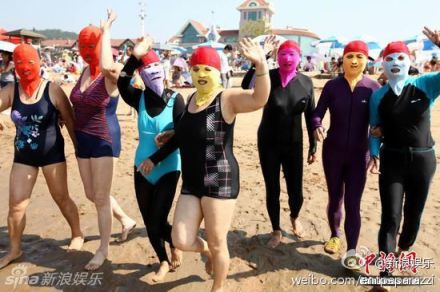
The facekini went viral in 2014.
In recent years, China has seen a rise in anti-tan, sun-protection garments. More than just preventing sunburn, these garments aim to prevent any tanning at all, helping Chinese women—and some men—maintain as pale a complexion as possible, as fair skin is deemed aesthetically ideal.
As temperatures are soaring across China, online fashion stores on Taobao and other platforms are offering all kinds of fashion solutions to prevent the skin, mainly the face, from being exposed to the sun.

One of these solutions is the reversed no-face sun protection hoodie, or the ‘peek-a-boo polo,’ a dress shirt with a reverse hoodie featuring eye holes and a zipper for the mouth area.

This sun-protective garment is available in various sizes and models, with some inspired by or made by the Japanese NOTHOMME brand. These garments can be worn in two ways—hoodie front or hoodie back. Prices range from 100 to 280 yuan ($13-$38) per shirt/jacket.

The no-face hoodie sun protection shirt is sold in various colors and variations on Chinese e-commerce sites.
Some shops on Taobao joke about the extreme sun-protective fashion, writing: “During the day, you don’t know which one is your wife. At night they’ll return to normal and you’ll see it’s your wife.”

On Xiaohongshu, fashion commenters note how Chinese sun protective clothing has become more extreme over the past few years, with “sunburn protection warriors” (防晒战士) thinking of all kinds of solutions to avoid a tan.

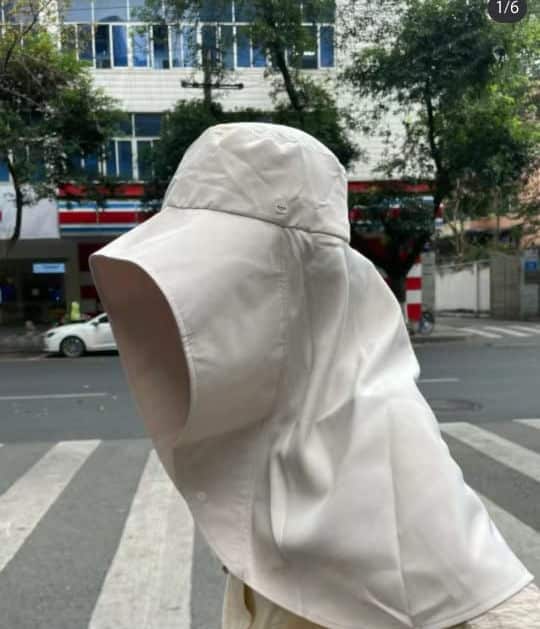


Although there are many jokes surrounding China’s “sun protection warriors,” some people believe they are taking it too far, even comparing them to Muslim women dressed in burqas.
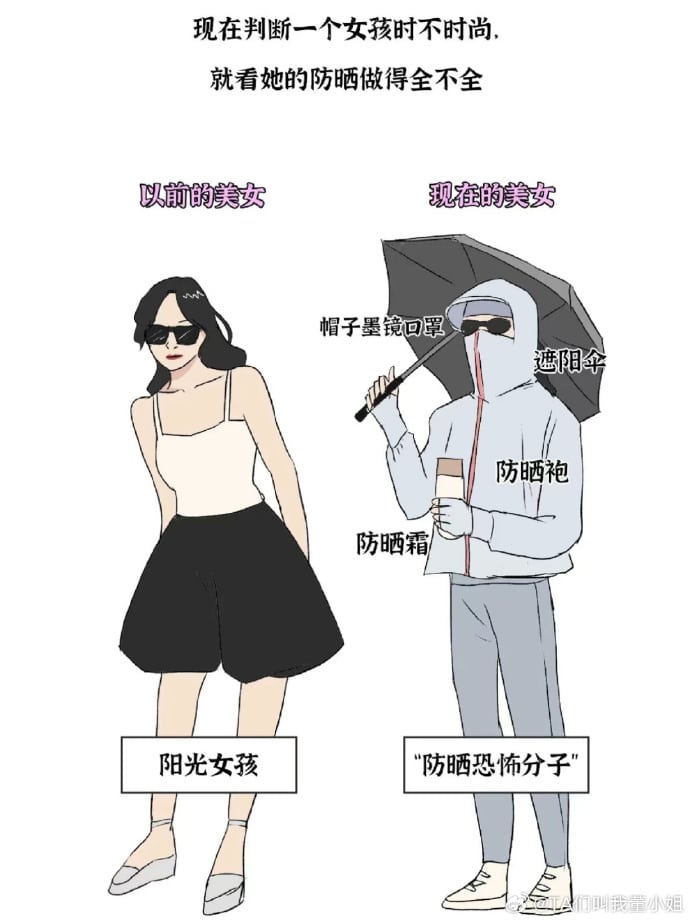
Image shared on Weibo by @TA们叫我董小姐, comparing pretty girls before (left) and nowadays (right), also labeled “sunscreen terrorists.”
Some Xiaohongshu influencers argue that instead of wrapping themselves up like mummies, people should pay more attention to the UV index, suggesting that applying sunscreen and using a parasol or hat usually offers enough protection.
By Manya Koetse, with contributions by Miranda Barnes
Spotted a mistake or want to add something? Please let us know in comments below or email us. First-time commenters, please be patient – we will have to manually approve your comment before it appears.
©2024 Whatsonweibo. All rights reserved. Do not reproduce our content without permission – you can contact us at info@whatsonweibo.com.
Subscribe

Weibo Watch: The Future is Here

“Bye Bye Biden”: Biden’s Many Nicknames in Chinese

Enjoying the ‘Sea’ in Beijing’s Ditan Park

A Triumph for “Comrade Trump”: Chinese Social Media Reactions to Trump Rally Shooting

Weibo Watch: Get Up, Stand Up

The Tragic Story of “Fat Cat”: How a Chinese Gamer’s Suicide Went Viral

“Old Bull Eating Young Grass”: 86-Year-Old Chinese Painter Fan Zeng Marries 36-Year-Old Xu Meng

A Brew of Controversy: Lu Xun and LELECHA’s ‘Smoky’ Oolong Tea

Singing Competition or Patriotic Fight? Hunan TV’s ‘Singer 2024’ Stirs Nationalistic Sentiments

Zara Dress Goes Viral in China for Resemblance to Haidilao Apron

Weibo Watch: The Battle for the Bottom Bed

About the “AI Chatbot Based on Xi Jinping” Story

China’s Intensified Social Media Propaganda: “Taiwan Must Return to Motherland”

Weibo Watch: Telling China’s Stories Wrong

Saying Goodbye to “Uncle Wang”: Wang Wenbin Becomes Chinese Ambassador to Cambodia
Get in touch
Would you like to become a contributor, or do you have any tips or suggestions? Get in touch here!
Popular Reads
-

 China Insight3 months ago
China Insight3 months agoThe Tragic Story of “Fat Cat”: How a Chinese Gamer’s Suicide Went Viral
-

 China Music4 months ago
China Music4 months agoThe Chinese Viral TikTok Song Explained (No, It’s Not About Samsung)
-

 China Digital10 months ago
China Digital10 months agoToo Sexy for Weibo? Online Discussions on the Concept of ‘Cābiān’
-

 China Arts & Entertainment12 months ago
China Arts & Entertainment12 months agoBehind 8 Billion Streams: Who is Dao Lang Cursing in the Chinese Hit Song ‘Luocha Kingdom’?




